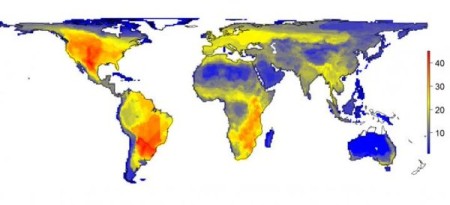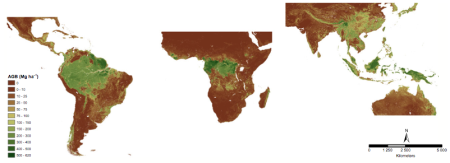Two global maps coincidentally turned up almost side-by-side on Twitter this weekend. Interesting in their own right individually, they threw up a question for me when I was forced to look at them together in my feed. A paper in Diversity and Distributions mapped what the diversity of large mammals would look like if not for what humans have wrought. Here it is.

And a paper in Global Change Biology mapped above-ground vegetation biomass across the tropics.

So my question is this: why does high-biomass vegetation support a relatively large diversity of mammals in SE Asia, but not in tropical Africa or South America?